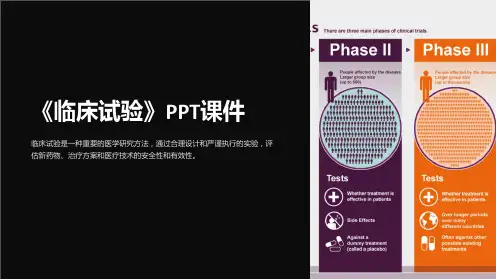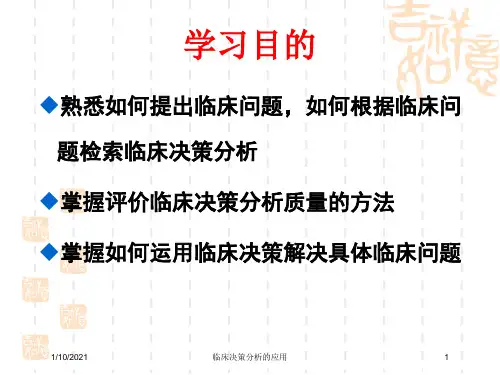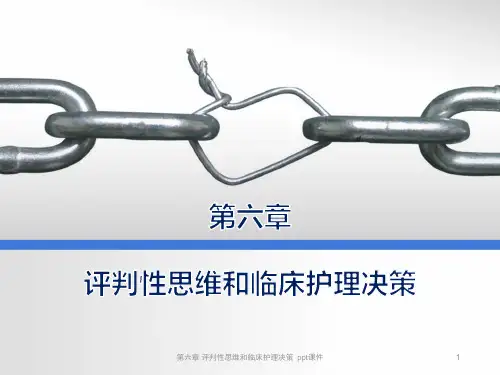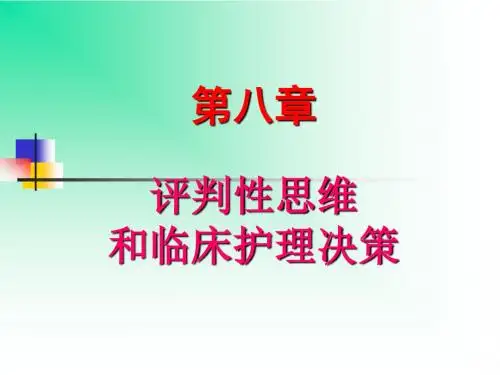诊断结果的可靠性产生影响
1/10/2021
临床决策分析的应用
3
患者面临多种选择和多个结局
① 接受检查:A 排队诊断,顺利生下正常婴儿, 或引起流产或胎儿损伤;B 发现异常,终止妊 娠。
② 不接受检查:A 自然流产; B 生产正常婴儿;C 生产畸形婴儿。 医生在面临这种多个选择方法,且有多个不 确定性结果的决策时,甚为困难,如何为患者 提出建议?
学习目的
熟悉如何提出临床问题,如何根据临床问 题检索临床决策分析
掌握评价临床决策分析质量的方法 掌握如何运用临床决策解决具体临床问题
1/10/2021
临床决策分析的应用
1
病案
39岁孕妇,G1P015+2 ,宫内孕活胎 曾因不育治疗5年,产科检查正常 孕妇及家人对即将出生的婴儿非常期盼,
但担心胎儿是否正常
策证据
3、决策分析研究结果是否真实? (1)研究是否包括了所有重要的决策备选方案和可能的结
局?
(2)确立、选择和运用证据确定概率时,是否采用了明确 的、敏感的方法?
(3)是否采用了明确而敏感的方法从可信的资源确定效用 值?
(4)是否考虑了潜在的不确定因素的影响?
1/10/2021
临床决策分析的应用
10
1/10/2021
临床决策分析的应用
11
1/10/2021
临床决策分析的应用
12
1/10/2021
临床决策分析的应用
13
Cost utility of diagnosis and the
risk-based threshold
▪ Background
Prenatal testing guidelines recommend offering amniocentesis or chorionic villus sampling to women aged 35 years or older, or who have been found by screening to be at a similarly high risk of giving birth to an infant with Down's syndrome or another chromosomal abnormality. This threshold was chosen, in part, because 35 was the approximate age at which amniocentesis was cost beneficial when testing guidelines were developed in the USA in the 1970s. We aimed to assess the economic validity of thresholds based on age or risk for offering invasive prenatal diagnosis










